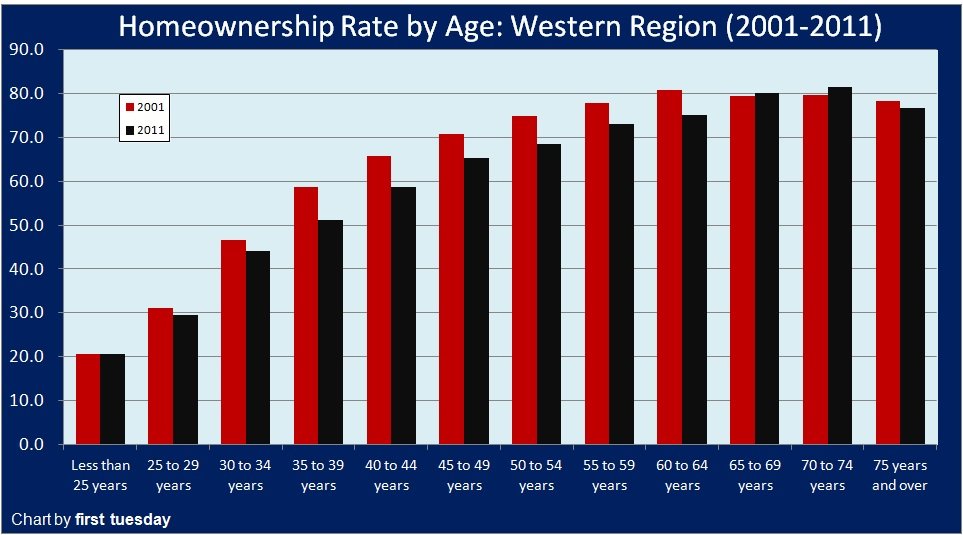The rate of homeownership among those aged under 35 has fallen 12% since 2006 in the Western Census Region, according to latest data from the U.S. Census Bureau (the Census). The Western Census Region includes all states west of Texas. The drop in homeownership was even more dramatic among those aged 35-44, with ownership rates falling 14% in this most recent half-decade. While some of this drop is due to continuing high rates of foreclosure and low rates of new employment, many potential homebuyers appear to be sincerely less willing to buy and occupy a property.
Related article:
Between 2001 and 2011, the rate of homeownership in California dropped for all age groups under 65, continuing a swift departure from the high rate of single family residence (SFR) owner occupancy that began in 2006.
The greatest drop in homeownership occured with individuals aged 25 to 29. This age group was 6% less likely to own a home in 2011 than 2010, and 19% less likely to own a home than in 2006. first tuesday does not expect this trend away from homeownership to stabilize until California experiences significant job growth. The high homeownership levels of the late 1990s were fueled by job growth of approximately 350,000 new jobs annually. In contrast, only 157,000 new jobs were created in 2011.
Related articles:
The low level of homeownership among this younger population is the prime reason the overall rate of homeownership for California has dropped 8% since 2006.
The rate of homeownership rose 3% in 2011 for those aged between 70 and 74, and 1% for those aged 65 to 70. The rate of homeownership among Californians aged 65 and over remains at almost precisely the same level now as it was at in 2006. The indication is that retirees and older homeowners remain set in the habits they have developed over a lifetime of ownership.
first tuesday take: If the younger generations are to determine the future of homeownership in California, then real estate professionals had better prepare for a future in which ownership of an SFR is merely one of several equally viable options. Multiple factors contribute to the decrease in interest for SFR homeownership among first-time homebuyers. Among those factors, some of the most significant are:
- uncertain employment status. Many young potential homebuyers have no permanent jobs, but balance part-time or low-paying jobs with ongoing education, both of which require mobility;
- changing values. Raised among suburban sprawl, the younger population is now moving to more centralized urban locations for jobs and culture. They neither need nor desire the “home on the range” that their parents saw as a symbol of the American Dream; and
- more cautious savings habits. The lingering debt left by the recession, student loans, and low employment levels has taught these young potential homebuyers the value of a dollar, and the serious risks presented by debt. Cautious savings and investments will cause them to avoid adjustable rate mortgages (ARMs). Many will delay or avoid the large debt required to make a home purchase.
first tuesday therefore expects a migration from suburban SFRs to rentals and condos (and, yes, plenty of houses) in the denser coastal communities of California. Real estate brokers, agents and investors, in turn, will find greater success if they look to those cities, and adapt to the values of this newest generation in the workforce.
Related articles:
Student debt limits home sales, they say
From city to suburbia then back



















